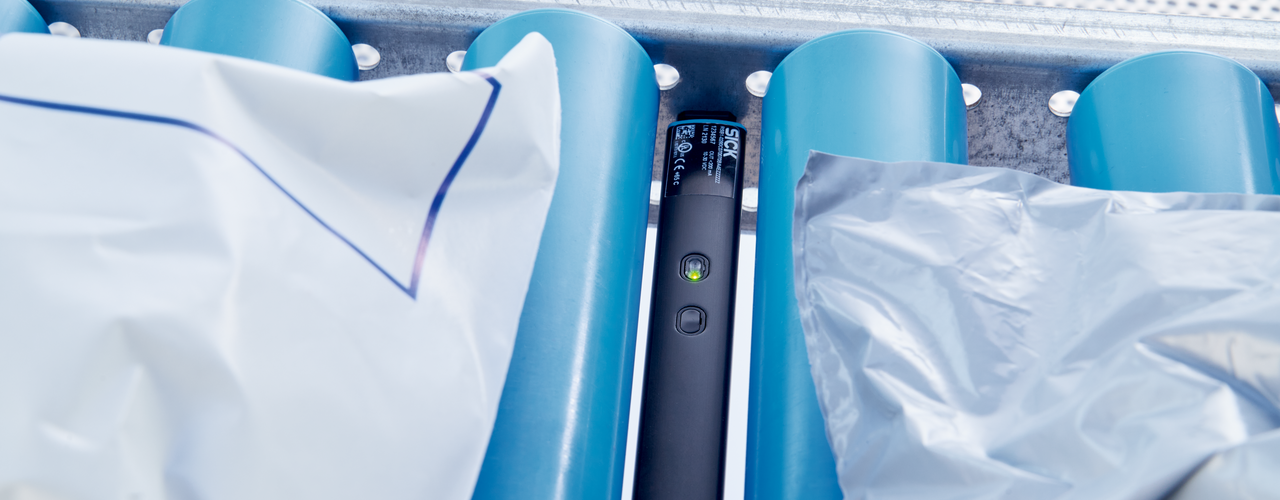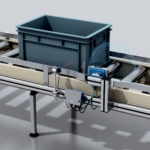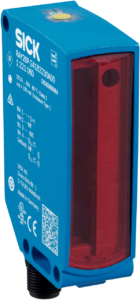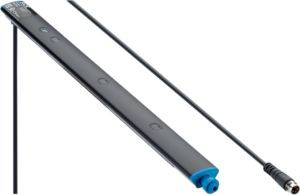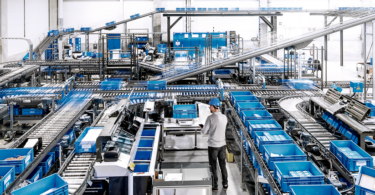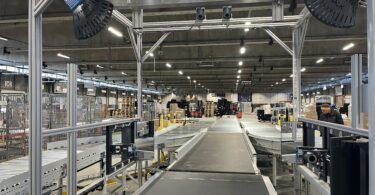We break down how leading-edge detection on your conveyors can benefit your processes and what sensors work best for each application
If you have equipment that moves product, it is vital to ensure sensors are detecting the leading edge of all objects quickly and accurately. Leading edge detection on conveyors refers to the process of detecting the front edge of an object as it moves along a conveyor. It is used to optimize object distances during zero pressure accumulation.
Sensors for edge detection help minimize downtime by detecting and alerting the operator of a product abnormality, enabling intervention before downtime ensues. This helps reduce unscheduled maintenance and potential losses. Additionally, leading edge detection on conveyors provides an opportunity to improve workflow and product quality. For instance, the detection system can identify misplaced items on the conveyor during machine operation, thus ensuring the efficient transport of goods.
However, when conveyors are moving objects other than boxes, a critical issue is to be able to detect the leading and trailing edges of ALL items so that the conveyor is fully utilized. In production logistics operations, objects of all different shapes and sizes must be reliably detected.
Challenges of Leading-Edge Detection
There are several challenges associated with leading edge detection on conveyors. Here are a few common ones among our customers.
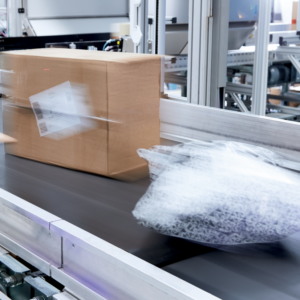 High Conveyor Speeds
High Conveyor Speeds
Maintaining a high speed and throughput level on conveyors is essential for production, but smaller objects are difficult to detect when moving at higher speeds. The fast movement of objects requires sensors or detection systems to have fast response times to capture the leading edge accurately.
For some solutions, the size of the minimum detectable object (MDO) increases with increasing speed. The processing time of the sensor can also limit the maximum throughput and the minimum distance between subsequent containers under certain circumstances.
Variable Object Parameters
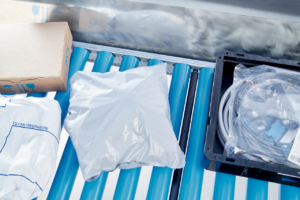 Objects being transported on conveyors can have different sizes, shapes, and orientations. Detecting the leading edge accurately can be challenging when dealing with irregularly shaped or non-uniform objects. With the rise in the use of more efficient and cost-effective packaging, irregularly shaped objects like polybags, blister packs, envelopes, tubes, and more are commonly used in logistics distribution centers. However, this presents a challenge for some sensors that are only designed to detect objects like boxes.
Objects being transported on conveyors can have different sizes, shapes, and orientations. Detecting the leading edge accurately can be challenging when dealing with irregularly shaped or non-uniform objects. With the rise in the use of more efficient and cost-effective packaging, irregularly shaped objects like polybags, blister packs, envelopes, tubes, and more are commonly used in logistics distribution centers. However, this presents a challenge for some sensors that are only designed to detect objects like boxes.
Additionally, some objects on the conveyor may overlap or come close to each other. This can make it difficult to precisely identify the leading edge of each individual object, especially when the overlap is significant.
Objects may also have transparent or reflective surfaces, making it difficult for sensors to detect the leading edge accurately. The smaller the object, the more challenging it is. The more precisely the different object parameters are defined, the higher the detection rate will be. Highly reflective, dark, or textured object surfaces increase signal noise with certain technologies. The use of several container types with varying size, color, and shape can pose a challenge.
Changing Conveyor Environment
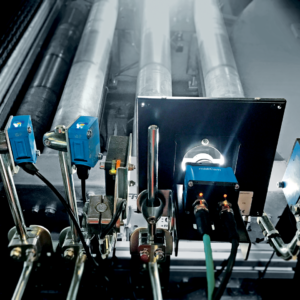
The vibration caused by motors, large objects, or other environmental factors can cause the detection of a true leading edge to be an issue. Conveyors may produce vibrations or noise during operation, which can introduce false readings or affect the stability of the detection process.
Environmental factors such as dust, debris, humidity, or temperature variations can also influence the performance, and affect the sensors' accuracy and reliability, leading to false detections or inconsistent results.
The lighting conditions in the conveyor area is another potential impact on the detection of the leading edge. Variations in ambient lighting, shadows, or reflections can interfere with the accuracy of the detection process and introduce errors.
Types of Objects to Detect
Have you ever had issues accurately detecting the presence of an object on your conveyor? In today's dynamic world, companies must deal with packages of different size, shape, and color which can cause single-spot photoelectric sensors to either double-count or miss an object completely.
With the plethora of options out there for sensing objects on your conveyor, how do you know what to pick? SICK offers three options with ranging detection options. What you may need for your process, depends on the specific application, but we likely have the solution for what you need! But first, let’s discuss three commonly used objects in logistics centers that need leading edge detection.
Containers
Containers are often used on roller conveyors in logistics centers. Leading edge detection of containers is used to optimize object distances during zero pressure accumulation. However, containers tend to jam or move into a bad position for detection. The reflective properties and the quality of different container surfaces also can impact accurate detection.
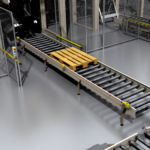 Pallets
Pallets
Goods are often transported on wooden pallets in high-bay warehouses. Wood, a natural material, has pattern irregularities such as knots. Parts of the pallet may also be damaged, smeared with oil, or surrounded by foil residues. The overall shape also presents general challenges with detection.
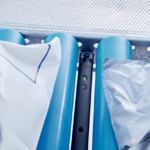 Polybags and Envelopes
Polybags and Envelopes
When shipping small parts, polybags are often used to optimize transport volumes and costs. The small leading edge presents great challenges to conveying systems utilizing a traditional photoelectric setup. It is critical to precisely determine the leading edge for singulation and accumulation to guarantee the object separations required by downstream processes. Various reflex array photoelectric sensors reliably detect the leading edge of polybags depending on the requirements.
The Right Sensor for All Types of Leading Edges
So what is the best sensor for your process? SICK offers three options with ranging detection options. What you may need for your process, depends on the specific application, but one of these three sensors below should work what you need!
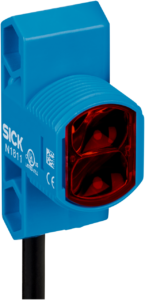 Z18 Simple Sense
Z18 Simple Sense
The Z18 from SICK is the most basic option for leading edge detection. It is a cost-effective photoelectric sensor that excels in reliable presence detection. Using a single beam detection, it works well for applications on roller conveyors for the detection of leading edges of various objects.
The simple design provides minimal downtime as the sensor is unlikely to be accidentally adjusted from vibrations and other environmental factors. Low-vibration mounting supports the precise detection capability of the sensors.
It also has numerous housing options for flexible and simple installation into existing conveyor systems. Whether the housing is hybrid, cylindrical or cuboid, whether with integrated M18 thread or basic mount, the Z18 Simple Sense product family includes a wide range of housing shapes and, thanks to numerous mounting options, can be flexibly adapted to the respective on-site requirements. This makes these sensors the ideal economical and reliable detection solution for all types of logistics applications, regardless of the type of system and installation situation.
Best for Detecting: Containers, pallets
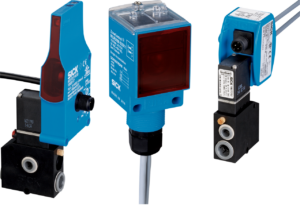 ZoneControl MultiTask photoelectric sensor
ZoneControl MultiTask photoelectric sensor
Just as traffic lights regulate the flow of traffic in towns and cities, SICK's ZoneControl solutions control the flow of products on a belt – without the need for a PLC or another type of external control. ZoneControl by SICK consists of three product families to control the flow of products. This procedure is called zero pressure accumulation (ZPA).
ZoneControl solutions are extremely easy to install (plug and play): Connect the ZoneControl products in series, install the sensor, and connect the pneumatic line or the connection to the motor-driven rollers. There is, therefore, no need for PLC programming, laptops, and expensive cabling.
Each product contains one of two types of startup logic: single feed (with or without sleep function) and block (slug) feed, depending on the requirements of the application. So that the various requirements can be met, there are three mounting configurations to choose from: mounting between the rollers (R/IR), mounting on the side frame (ZLM), or mounting above the belt (WLR)
Best for Detecting: Containers, polybags, pallets
RAY10/RAY26 Reflex Array
The RAY10 & RAY26 can detect flat objects all the way down to 3mm, which will make your system future-proof as packages become smaller and requirements get tighter. Because of this, both excel at the detection of polybags and other irregularly shaped packages.
These sensors have a uniform and highly visible light band, making it quick and easy to align. After alignment, only teach-in is needed before it is ready for object detection.
During operation, blue LEDs indicate the degree of contamination of the sensor and reflector. The integrated IO-Link technology enables quick and reliable transmission of these maintenance signals to the controller (PLC). This means maintenance and cleaning of the sensor can be planned at an early stage, avoiding unplanned downtime.
Conveyor belt suppression enables gradual deactivation of the detection zone (A) right above the conveyor belt. This suppresses the interference of the conveyor belt that causes the sensor to switch during system operation. It also increases productivity with reliable object detection (regardless of object property) and the prevention of multiple switching (for perforated, non-uniform objects).
Best for Detecting: Containers, polybags, pallets
Roller Sensor Bar
SICK's roller sensor bar is a specialized solution for leading edge detection on conveyors. This presence detection sensor provides an easy and quick installation with spring-loaded mounting. As a result, it reduces installation time by up to 30% with the spring-loaded end cap for seamless integration into the conveyor side channel using standard mounting brackets.
The Roller Sensor Bar reduces blind zones on either end of the conveyor by offering varying housing lengths. Configuring the length of the sensor allows for integration into many conveyor types. Performance is configured by selecting a beam spacing between 50 mm and 200 mm to detect poly bags, jiffy packs, boxes, totes, and pallets. You can mount the sensor between rollers or belted sections to detect objects between conveyor sections and in transfer zones.
Equipped with excellent ambient light immunity, the Roller Sensor Bar increases throughput by reducing false trips on objects in the background. Leveraging IO-link it provides diagnostic application information for real time status information to avoid unplanned downtimes and conveyor jams.
Best for Detecting: Containers, polybags, pallets


